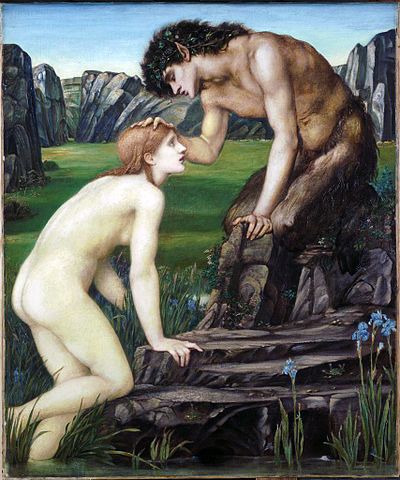
As a complement to my recently released book, The Great God Pan, this posting offers a selection of some of the key representations of the god by artists over the last five or six hundred years. There are various ways of classifying these images- by nationality, by artistic style or by time period (which I chose in the book).
However, what emerges from a review of the pictures is that there are certain regular themes you see repeatedly on the canvases: these are drink (Pan is known for his association with Dionysus and their love of a good debauch); following from this, sex with nymphs is a major interest of Pan and his accompanying satyrs and fauns. Chasing nymphs, drinking with nymphs and copulating with nymphs take up a lot of the time of the god and his entourage. In the moments left over from drink and nympholepsy, Pan (as creator of the pan pipes) enjoys music and dance. Lastly, but rather rarely, he can be glimpsed in rather less self-indulgent scenes, such as giving advice to needy nymphs. For the gallery here, I have chosen to organise the images on the basis of theme.
Pan the Tipsy
Wine is a natural product that fuels Pan’s passions. Artists have known for centuries that scenes of drinking are popular, amusing and readily understandable. There’s no need for complex mythology; everyone can appreciate when a “party got out of bounds” (to quote the B52s).
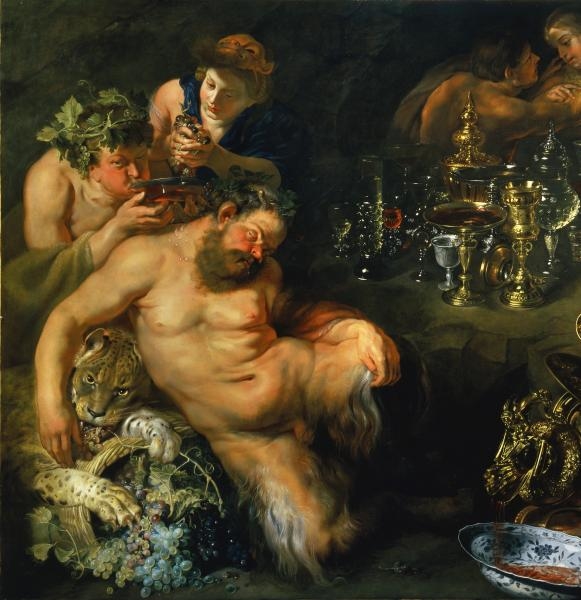
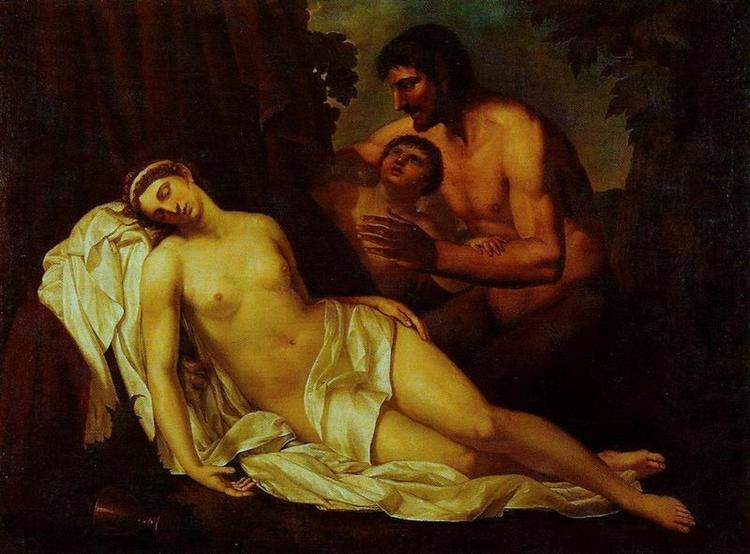
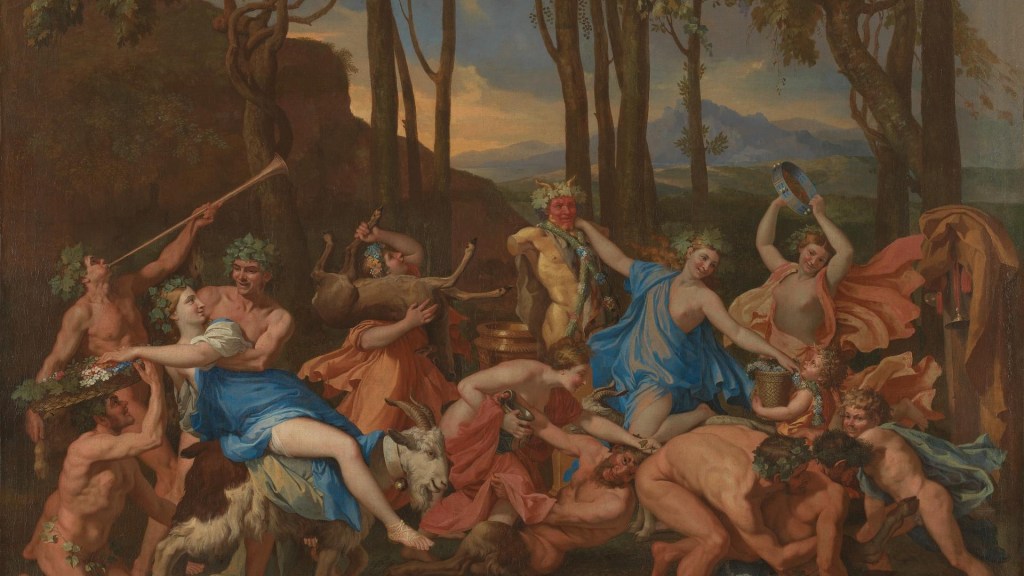
Pan the Sex Pest
As we can see in the Poussin canvas above, once the wine has loosened inhibitions, affairs can easily degenerate into a Bacchic orgy (although Pan scarcely needed much excuse to have sex with a pretty young girl). His retinue was composed of nymphs and of human women who were ecstatic devotees of the Dionysian cult. Love was, quite literally, all around. It wasn’t all wild rutting, though: the image by Gerard von Honthorst shows a delightfully tender and affectionate pair. It’s also worth noting the tendency of artists to emphasise the youth of the nymphs, often in contrast to a hoary and gnarled old Pan. In the picture by Romako, we definitely seem to have something of a ‘trophy girlfriend’ for a balding, mature satyr.
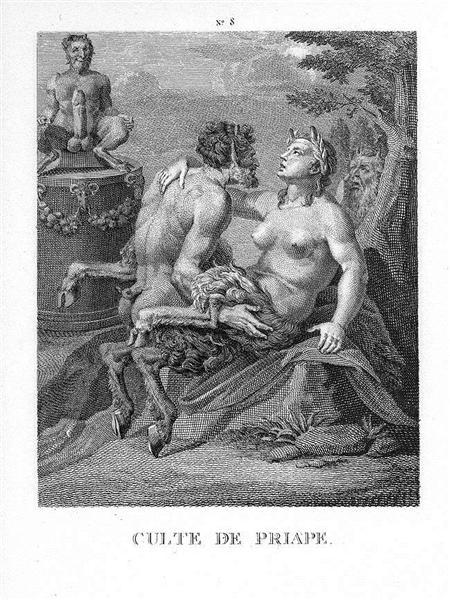
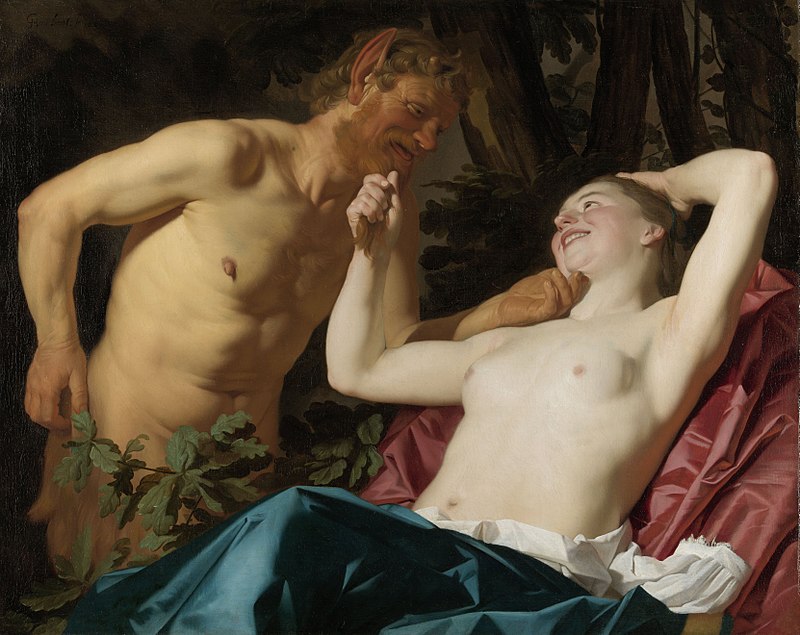
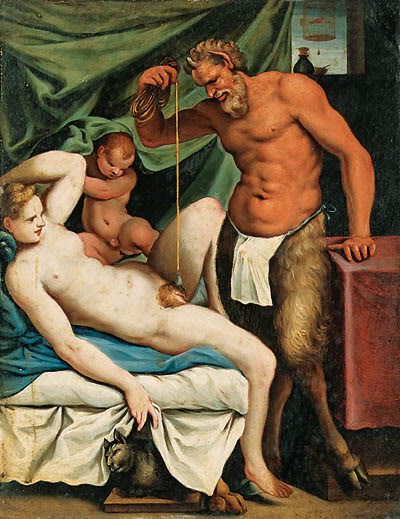
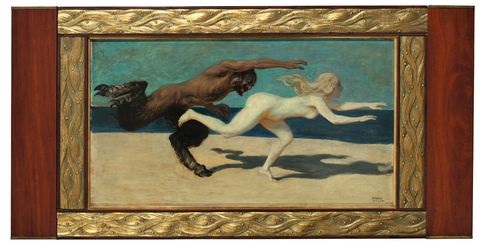
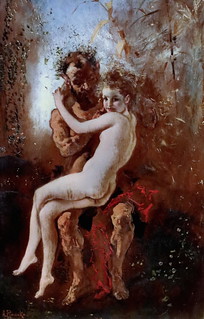
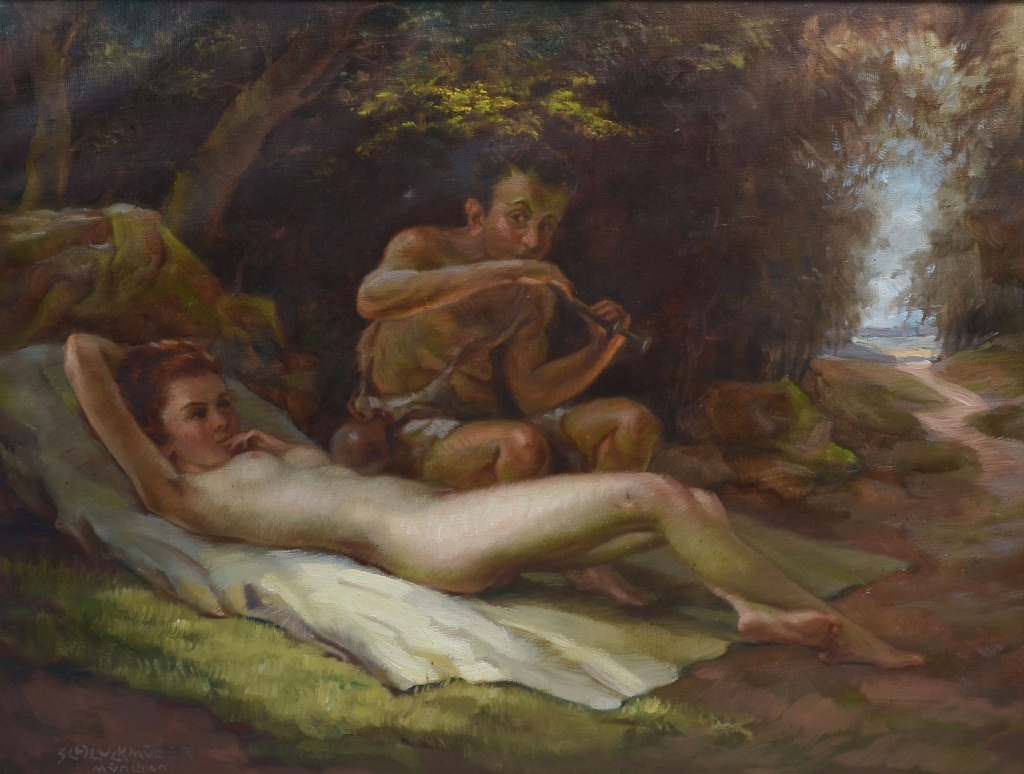
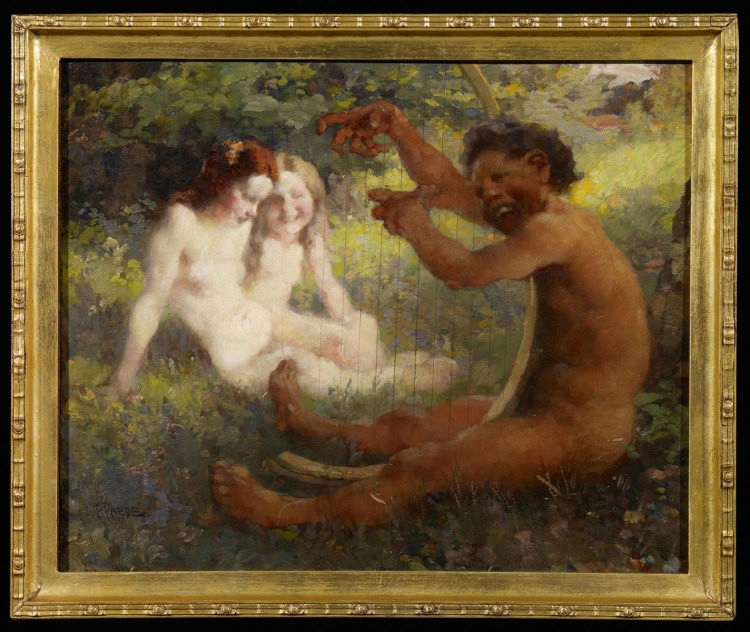
Very rarely, we get a glimpse of a more diverse Arcady, in which female satyrs and infants exist. We have seen saw plenty of rutting, but homelier scenes are harder to discover. One of the very earliest paintings of satyrs, Pietro di Cosimo’s The Discovery of Honey by Bacchus (1499) features children and a mother satyr breast-feeding her baby faun and Arthur Brown Davies’ On the Banks of the Arethusa, dating from 1910 (below), shows a young brother and sister faun, reassuring us that the species will not die out.
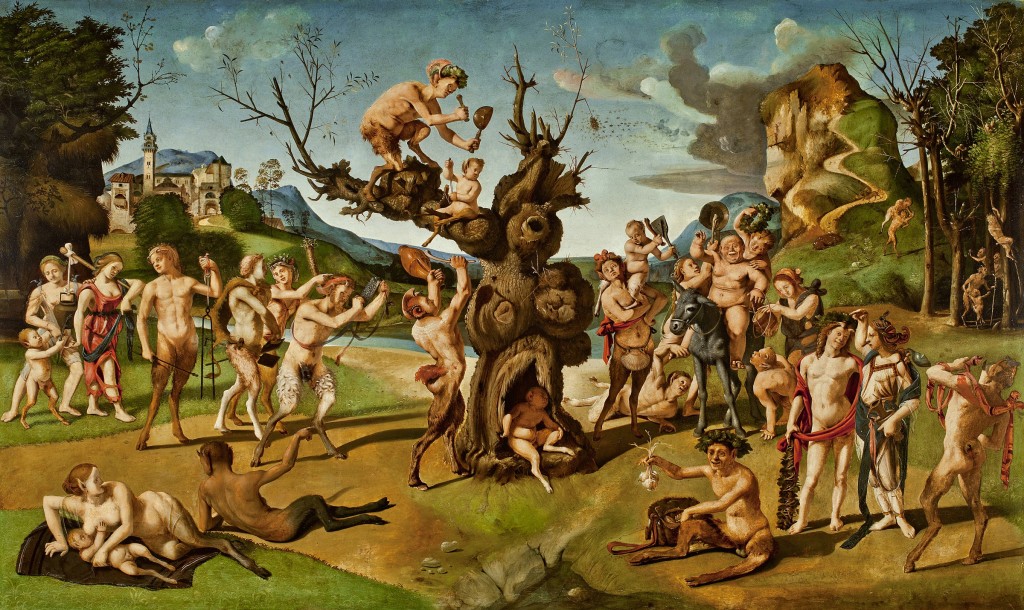
Pan, the Piper at the Gates of Dawn
The last couple of images lead us into Pan’s musical associations. When Syrinx, a nymph he was chasing, was changed into reeds to protect her from potential rape, the god was devastated and dismayed. The only way of keeping her close was to make pipes from the reeds and, ever since, Pan has been the god of poets and inspiration.
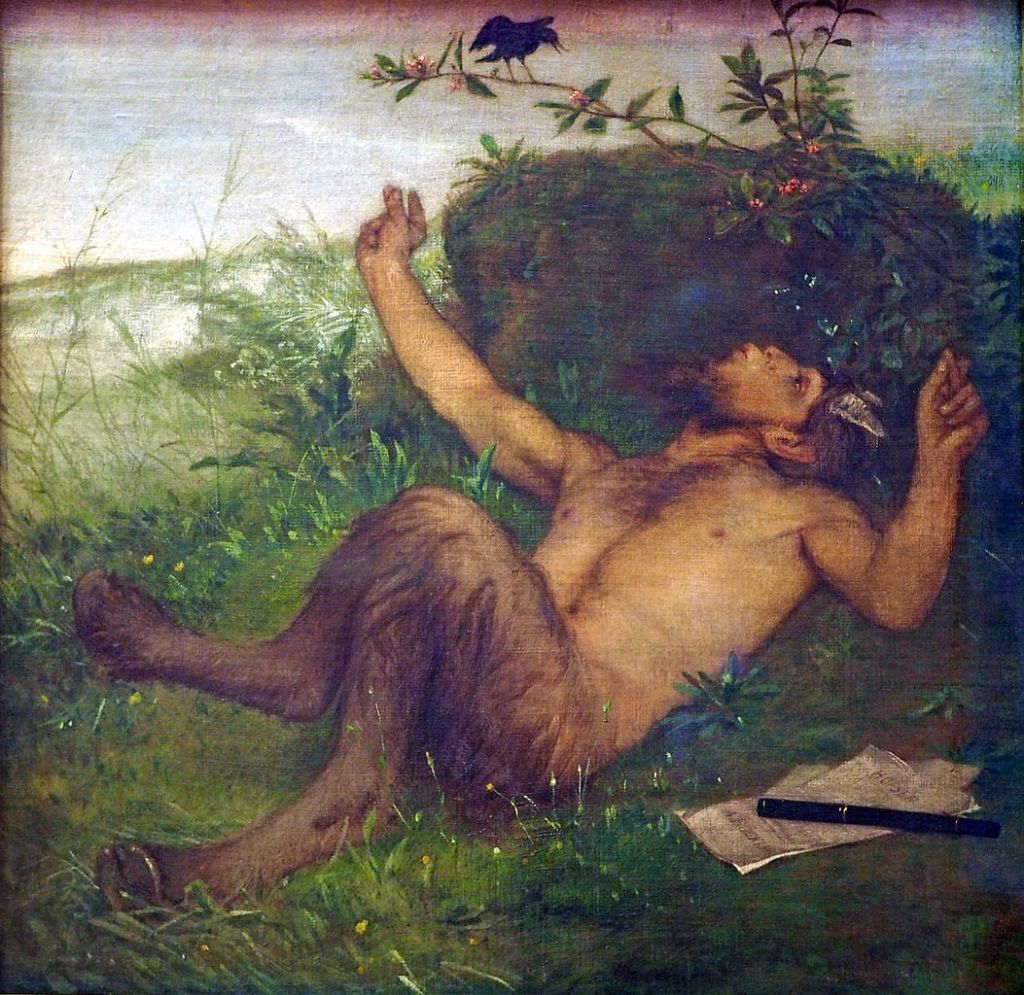
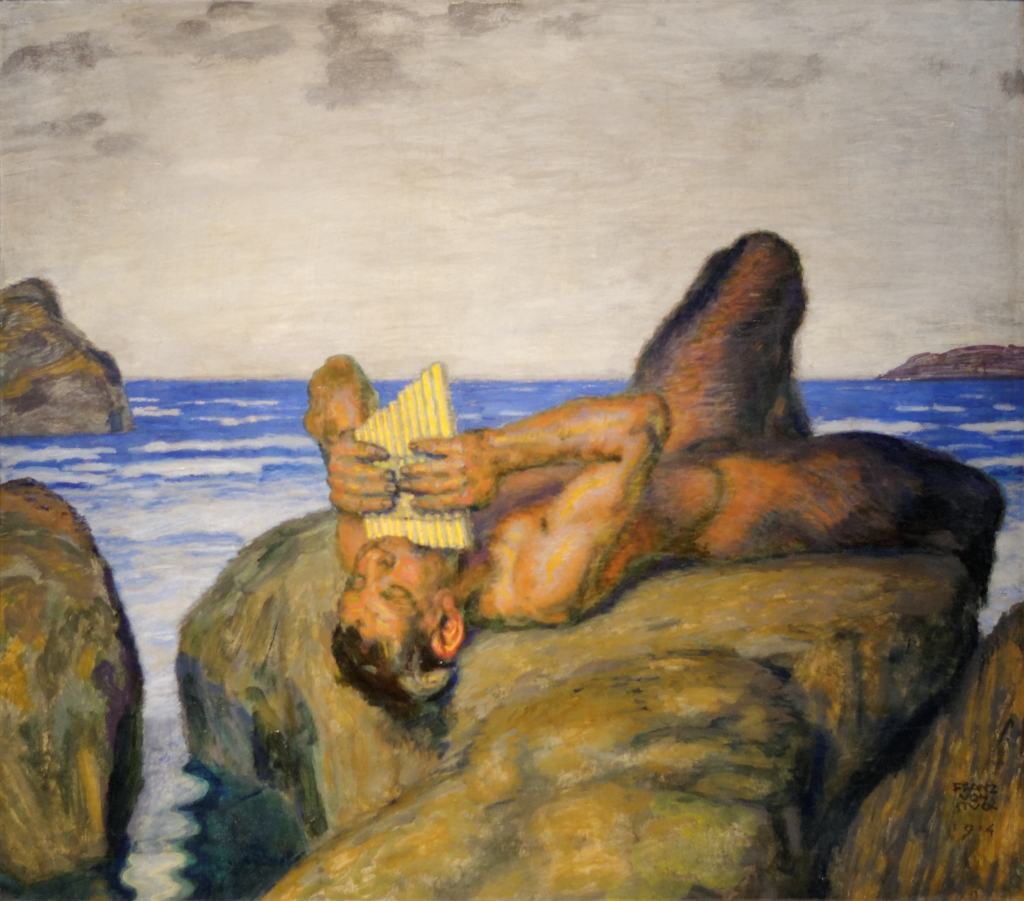
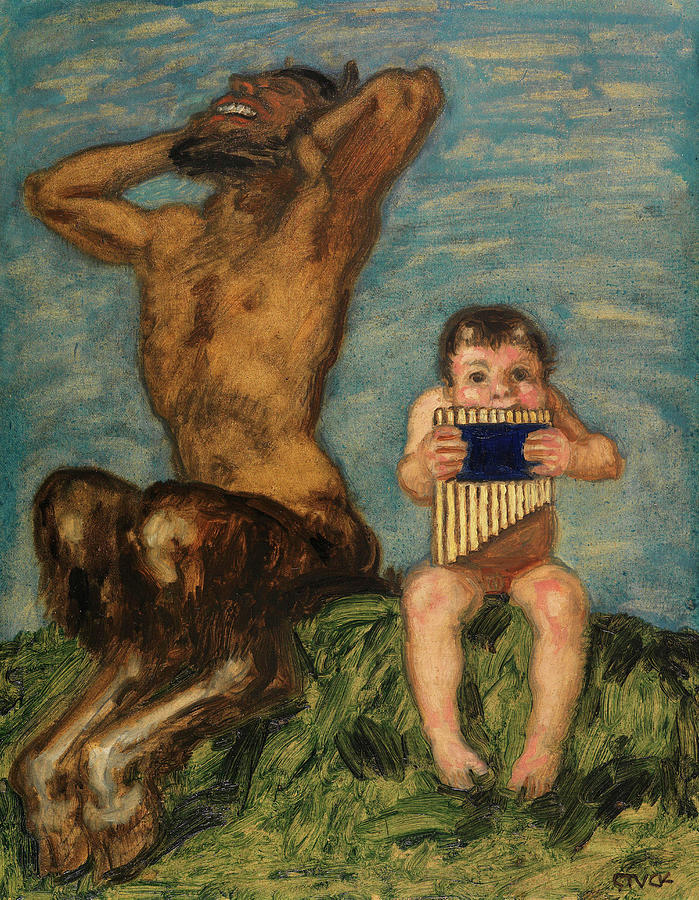
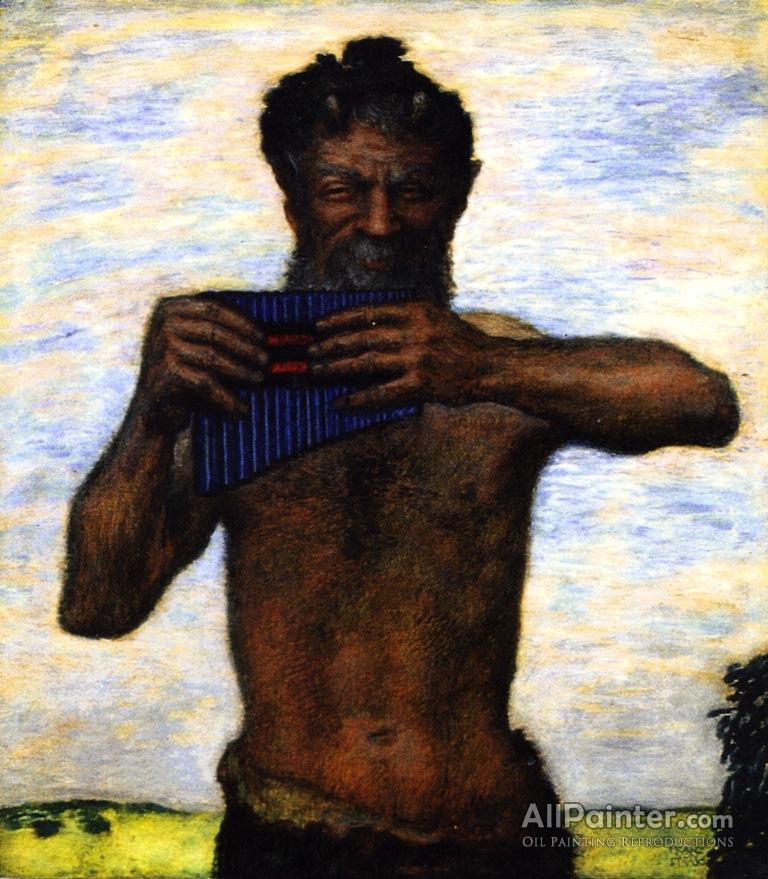

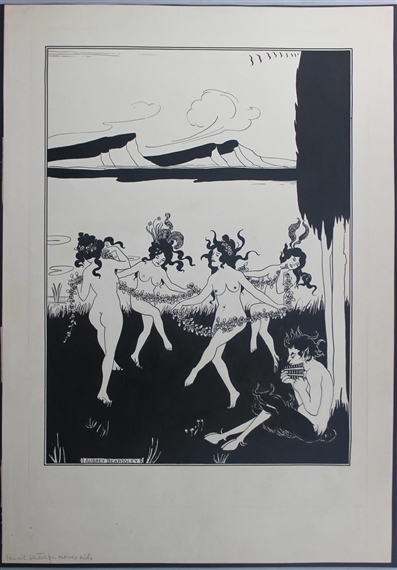
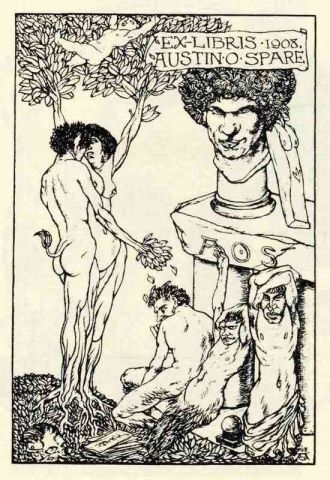
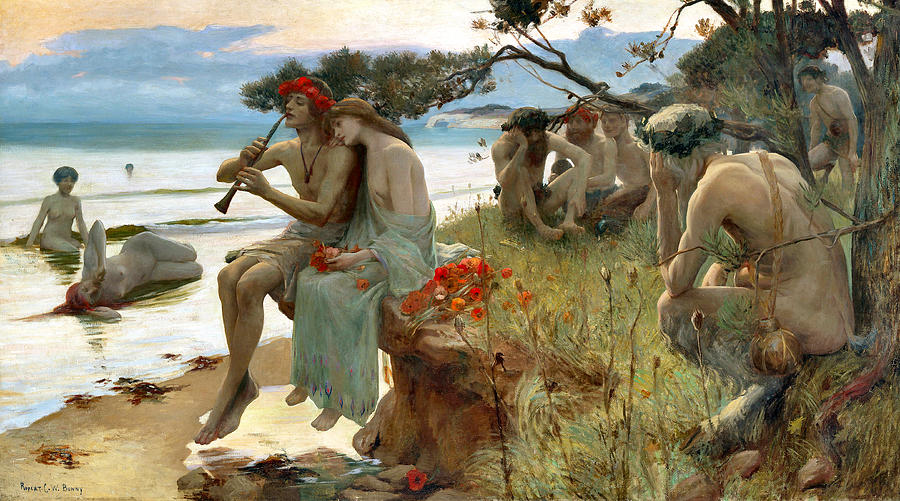
Other Visions of Pan
A few artists, from time to time, have imagined Pan performing other roles or, more and more commonly from the late nineteenth century onwards, they have miniaturised him and made him less threatening.
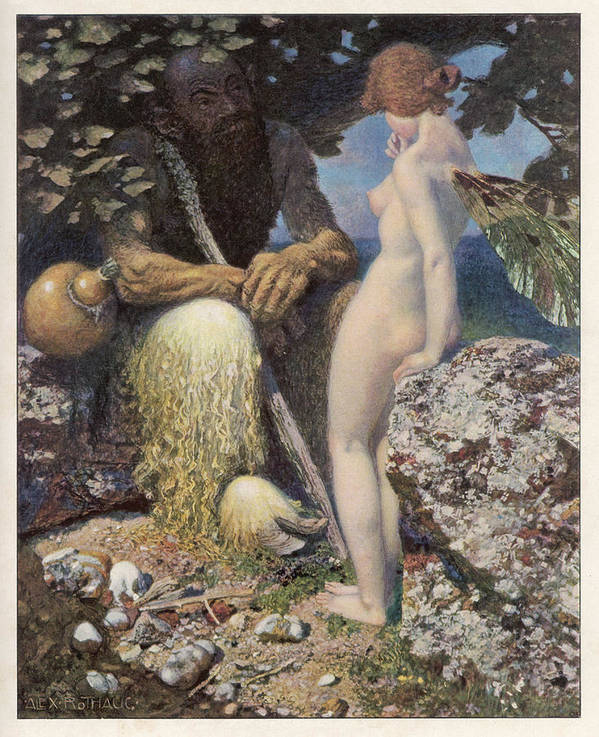
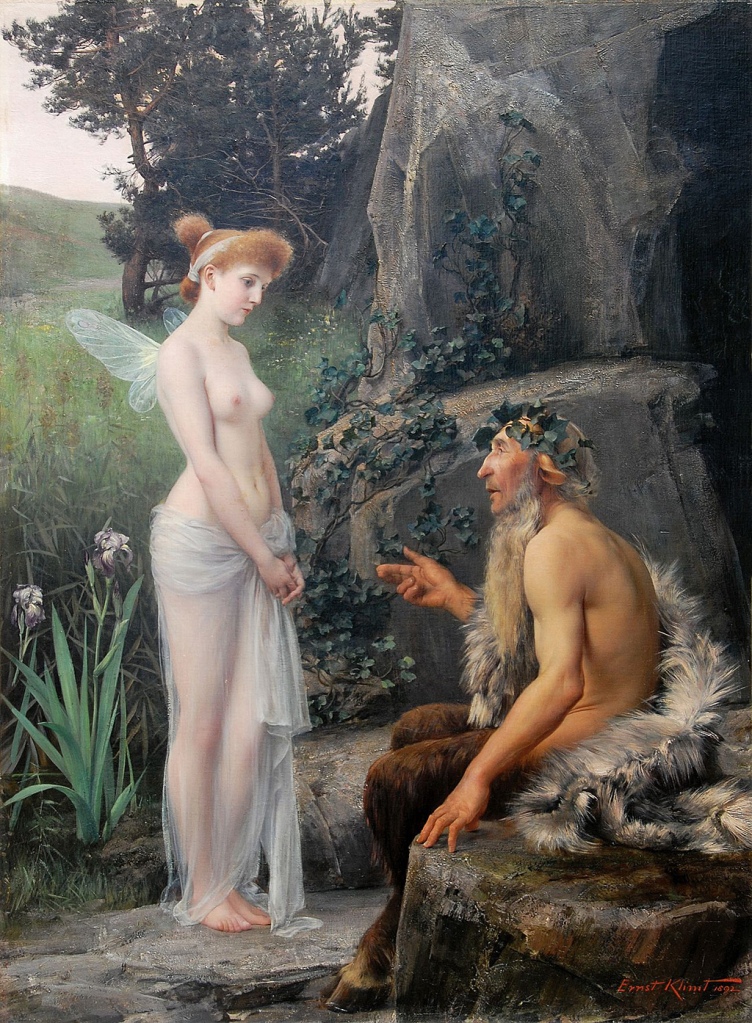
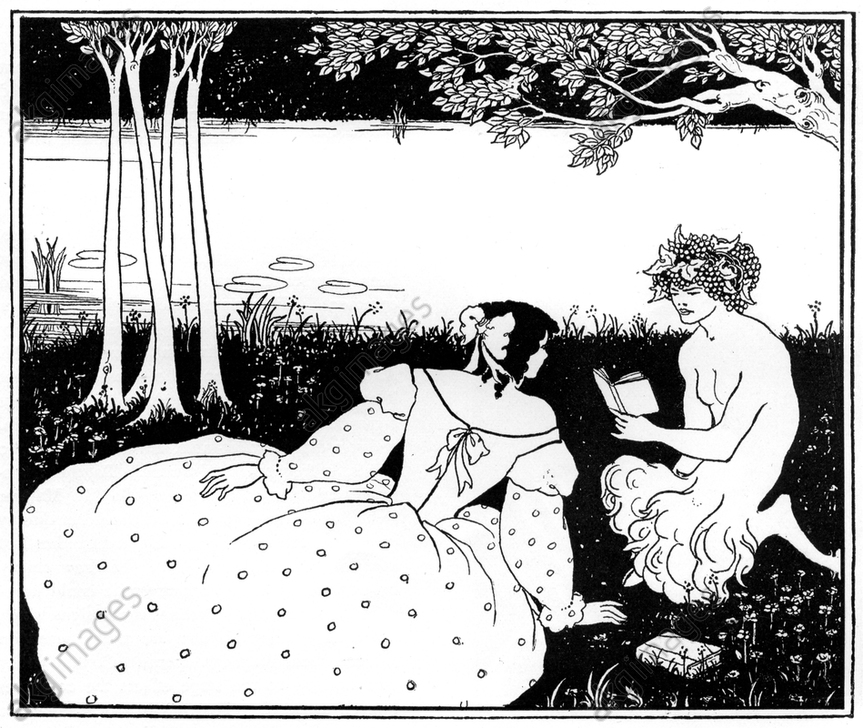

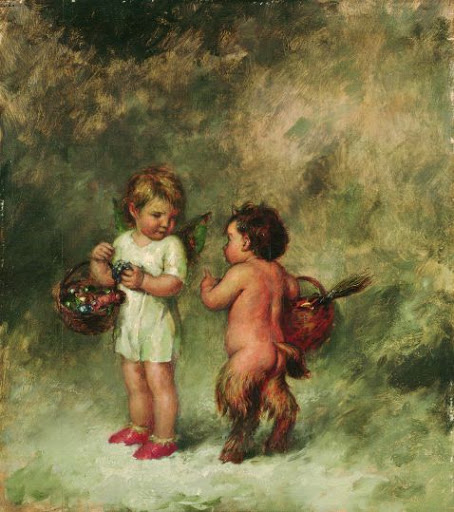
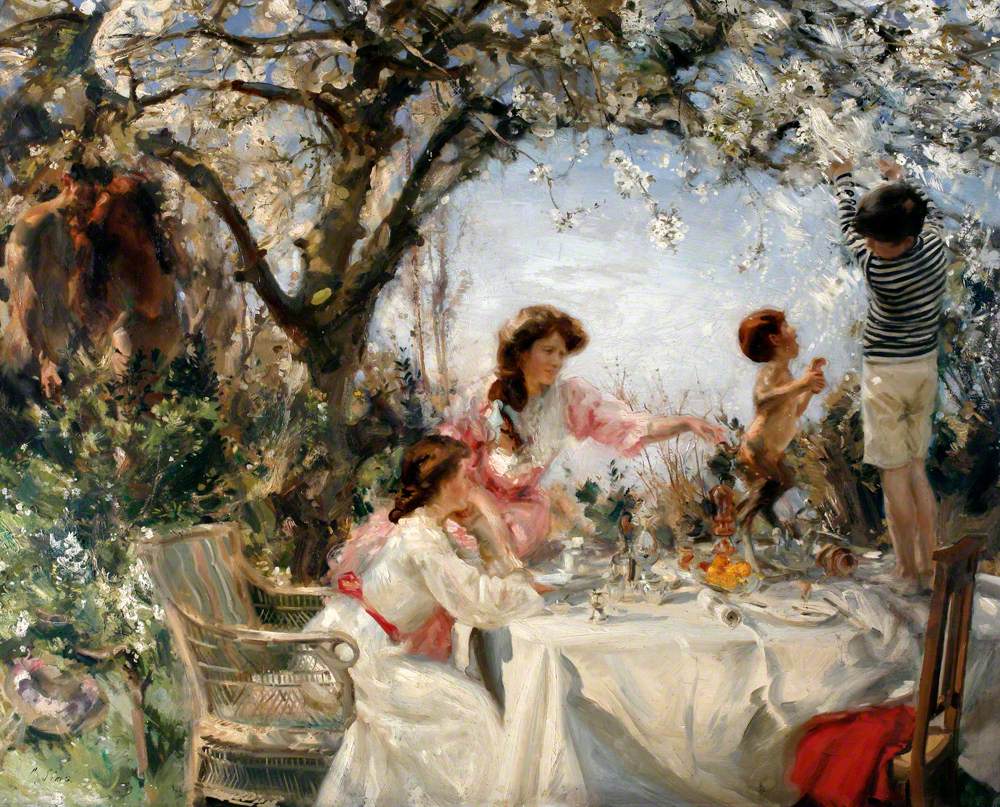
Further Reading
I have created a gallery of some of the more adult and explicitly sexual images of Pan on a separate page, which can be visited by clicking here– the content can verge on the pornographic, so be warned. These works of art, and many more, alongside a very rich heritage of poetry and prose, are examined at length in my book The Great God Pan. I also now have a page dedicated to nymphs: for lots more information, please visit my nymphology blog.

[…] links to music are ancient, because he is said to have invented the Pan pipes using reeds- after the nymph Syrinx, whom he was pursuing, was transformed into reeds in order to […]
LikeLike
[…] Keats). He said that his earliest poetic loves were the rustic deities and elemental natures like Pan. Christian mysticism, encouraged by his contact with Palmer, for a while displaced these […]
LikeLike
[…] the ground throbbed, green, under his goat’s feet;Where, softly kissing the fair nymph Syrinx, his lipsModulated under the sky the great hymn of love;Where, standing on the plain, he heard […]
LikeLike
[…] wanting to escape and wanting to be caught. The nymph Syrinx epitomises this because, pursued by Pan, she chose to ask the gods to transform her into reeds rather than being captured. Pan later made a […]
LikeLike
[…] a couple of instances in which this aspect of his character was taken up specifically by modern artists, giving greater emphasis to his lewd– even slightly fetishistic– […]
LikeLike
[…] the satyrs were portrayed in book illustrations and erotic art- as well as in ‘Academy’ paintings– during the later nineteenth century and early twentieth. These images were often still […]
LikeLike
[…] 10, c.22). Ancient art too unashamedly depicted such scenes, as in the famous Greek sculpture of Pan and a She Goat. In more recent British folklore, sexual relationships between humans and selkies […]
LikeLike